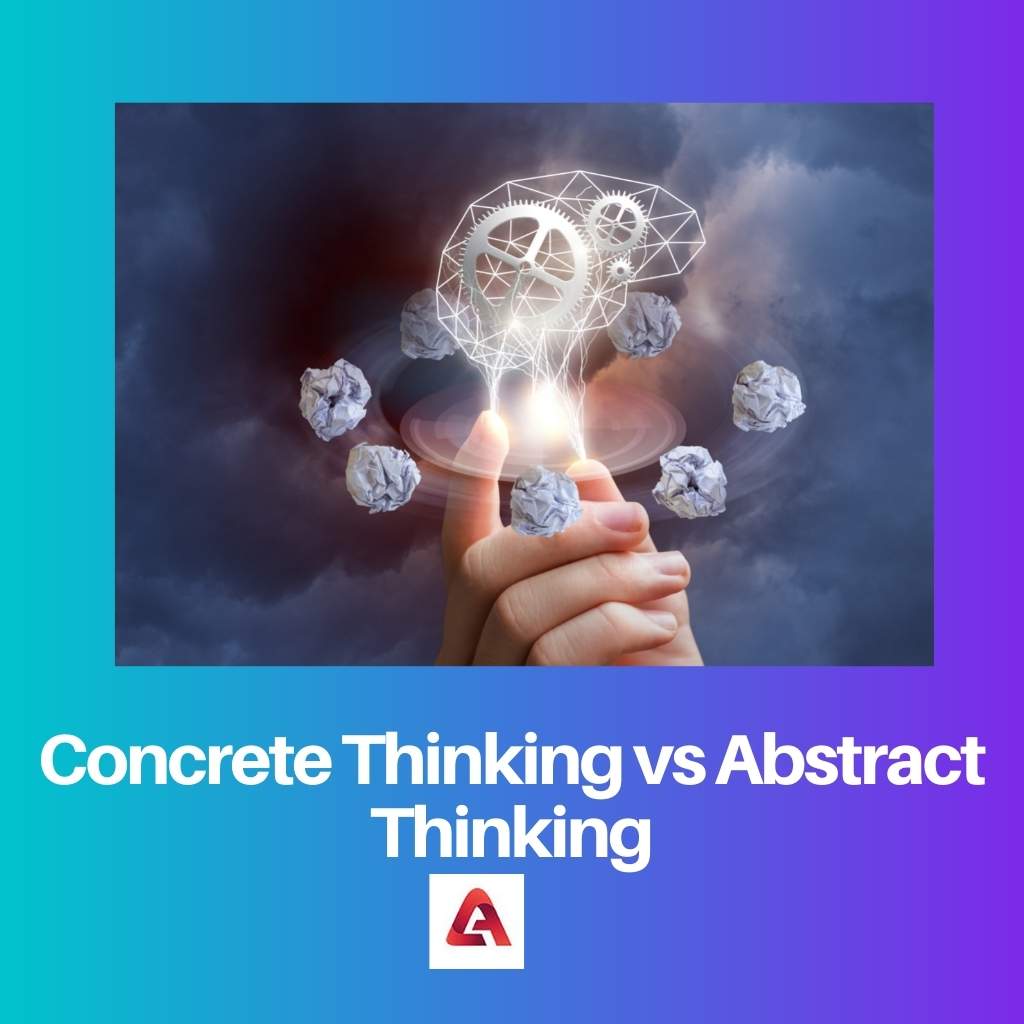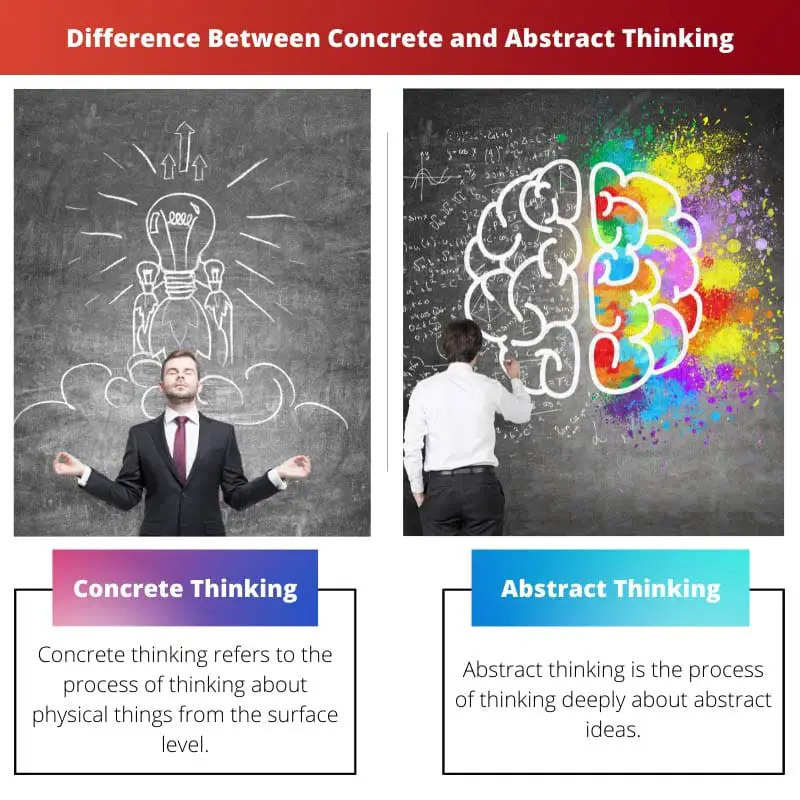There are two types of thought processes that the ideas can be categorized into: Abstract thinking and Concrete thinking.
Key Takeaways
- Concrete thinking focuses on tangible objects, specific details, and real-world situations.
- Abstract thinking involves conceptualization, generalization, and the ability to understand complex relationships.
- Cognitive development progresses from concrete thinking in childhood to abstract thinking in adolescence and adulthood.
Concrete Thinking vs Abstract Thinking
Concrete thinking is a thinking process that looks at physical things from the surface level or how they appear, mostly on ideas related to survival and instinct. Abstract thinking is a process of thinking deeply about ideas like love, hatred, anger and other abstract concepts during decision-making.

This type of thinking is a part of our survival instinct, which involves thinking about our livelihood, including factors such as the source of food and shelter and the improvement that can be made to it.
Abstract thinking is the process of analyzing these thoughts with more depth, arriving at solutions to the various dilemmas of the mind.
Comparison Table
| Parameters of Comparison | Concrete Thinking | Abstract Thinking |
|---|---|---|
| Definition | Concrete thinking refers to the process of thinking about physical things from the surface level | Abstract thinking is the process of thinking deeply about abstract ideas |
| Ideas involved | Ideas relating to the survival instinct are involved | Abstract ideas such as emotions like love, anger, hatred are involved in abstract thinking |
| Level of thinking | Thinking involves only the surface level | A deep level of thinking is involved |
| Scenarios | This type of thinking occurs during the assessment of the surroundings | This type of thinking occurs during important decision making |
| Pace of thinking | Quick thinking is performed | This is a time-consuming process |
What is Concrete Thinking
Concrete thinking is the exact opposite of Abstract thinking. It is the process of thinking about physical things, such as jobs, money, and houses, from the surface level.
Every animal has to constantly think and plan about things related to its survival. This includes the source of food, shelter, ways of escaping a dangerous situation, etc.
Rather, they would try to understand the important details of the situation as fast as possible so that they can use the facts to their advantage.

What is Abstract Thinking?
Abstract thinking refers to the process of thinking deeply about abstract ideas.
Thus, the thinking is long and leads to the generation of different perspectives and views about the idea.
Abstract thinking is the starting point of ideas of freedom and liberation. Many freedom fighters and philosophers were abstract thinkers.

Main Differences Between Concrete Thinking and Abstract Thinking
- Concrete thinking is done to quickly assess the situations and consider the important details of the facts. Abstract thinking is done while making important decisions related to abstract ideas.
- Concrete thinking is quick. Abstract thinking is time-consuming.





